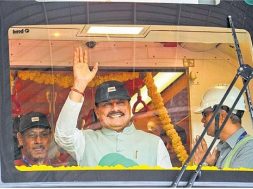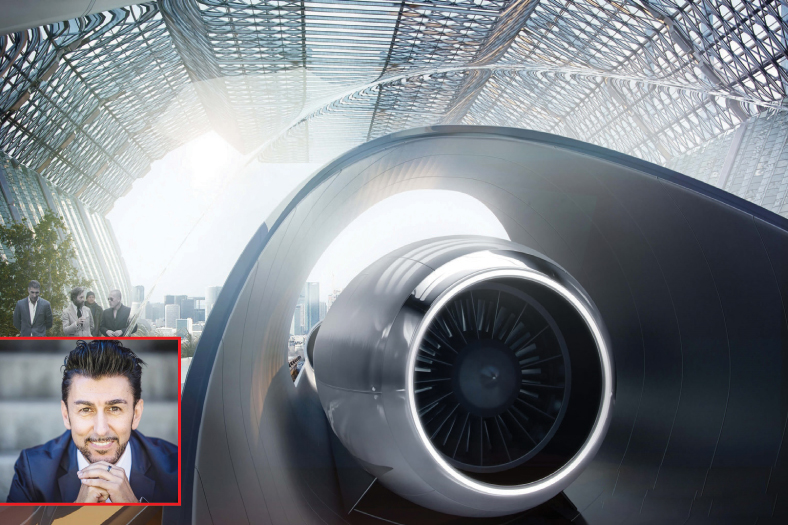PEB structures bound to gain further momentum
PEB structures bound to gain further momentum
“Tracing back the origin of PEB in India in the early 90s, PEB structures has marked a steep growth in building construction,” says Manish Garg, President, Everest Industries Ltd.
The government is focus on infrastructure sector in 12th five year Plan which makes the PEB sector to anticipate big. As the need of the hour for Indian construction market is speed, strength, sustainable and comfortable steel structures, it’s also getting a positive momentum. Mr Garg shares how the construction and building solutions companies like Everest Industries have started addressing the need for PEB structures in the future.
How has the Indian PEB industry evolved over the years?Mammoth change in Indian urban infrastructure has been witnessed with the introduction of the concept of instant buildings in the form of pre-engineered buildings (PEBs) and smart steel buildings (SSBs). It is one of the biggest technological innovations of the Indian construction market till date. A decade back, if the term PEB would have been used, very few would have been conversant with both the word and the idea of pre-engineered steel buildings and smart steel buildings. It was after 2003, the whole PEB and SSB concept gained acceptance from the Indian construction market. Now in the zone, we have leading players like Everest Industries, Interarch Building Products, Hindustan Alcoz, United Steel Structurals, and Kirby Building Systems who are securing their foothold strongly and are posing quite a challenge to the Indian traditional construction market.
The government is focusing on infrastructure sector in 12th Five-Year Plan. How will it impact PEB?Tracing back the origin of PEB in India in the early 90s, pre-engineered building (PEB) structures has marked a steep growth in building construction. With the government’s focus on infrastructure sector in 12th five year Plan, the PEB structures are bound to gain further momentum as people focus on saving money, time and energy more than before. This stature of buildings has to the greater extent sufficed the modern commercial and domestic needs, and has given rise to energy-efficient and cost-efficient structure for the end user.
They are also a positive push to the growing Indian economy as the need of the hour for Indian construction market is speed, strength, sustainable and comfortable steel structures. The construction and building solutions companies like Everest Industries have started addressing the need for PEB structures in the future. It will further place its reach to strong high-rise buildings.
What are the advantages of PEB over conventional structures?PEB has massive advantages over conventional method of construction. PEB structures are created with a high proportion of recycled content making them lighter by about 30 per cent than the conventional steel buildings. As opposed to being on-site fabricated, PEBs are delivered as a complete finished product to the site from a single supplier with a basic structural steel framework with attached factory finished cladding and roofing components, helping in the completion of construction of massive structures within minimal on-site work and time. Average time taken to do a massive construction with the help of PEBs is between 6-8 weeks as compared to 20-26 weeks for conventional construction procedures. They are customised steel buildings and resistant to moisture, adverse weather conditions, earthquakes, termites and fire. Low-maintenance costs, versatile use and ease of expansion are the reasons why these PEBs are the preferred method of construction in most developed nations for decades.
Compared to conventional structures, is construction of PEB costlier?In PEBs, both costs and time of erection are accurately known based upon extensive experience with similar buildings. Typically, conventional building structures are 20 per cent or more expensive than PEB in most of the cases, and the time consumed in this constructional procedure ranges between 6 – 8 months. Depending on the size, it can even exceed the given time limit. The raw materials used in the production procedure are also varied, and their prices are constantly fluctuating, resulting in a time consuming costlier project.
Where does India stand compared to other countries in terms of usage of PEB?PEB use in constructional genre gained momentum mainly after 2003 in India. The Indian constructional market has a 27 per cent of PEB dominance compared to a 70 per cent PEB dominance in the United States and other developed countries across the world. Majorly, the commercial construction market has witnessed the use of PEB in India. The residential section is yet to witness this massive constructional shift in the nation. Gradually, this constructional procedure is being accepted not only by the construction companies and the people but also by the architects in terms of aesthetics and strength. How is the industry coping up to challenges like skilled manpower, presence of alternative building structure, fluctuating raw materials?Acute shortage of trained manpower for design and execution is a big challenge. Everyone wants readymade engineers, no one is interested in creating them, Everest is doing a lot in this filed by training the raw talent under its unique GET/DET programme where fresh engineers go through a rigorous classroom and practical training.
In terms of dealing with alternative building facilities and fluctuating raw materials, our vision is to be penetrated deep. We reach where no one could or perhaps would. We did not target the natural markets where everyone goes and fights for business. We created our own market and served it with diligence. We helped market grow in a way that at least 40 per cent of our buyers are first time PEB users and got to know the PEB concept through Everest channels, sales reps, or Everest TV commercial. No wonder, we got the coveted status of being the fastest growing building solutions company In India.
What are the innovations happening in the sector?The speed is the single most innovation which is still being reinvented. Some company just erected a building in 48 hours in Chandigarh, and the use of mechanisation in erection is being increased substantially. Everest just completed the erection of a 40,000-square-feet insulated building for Dabur India at Baddi in 200 hours. This is incredible given the scale of the building and peculiarities of insulated panels. The other is computer-aided design and customised software for Indian condition design of PEBs. Everest uses a patented software invented for IS standards compatibility which was a part of innovation that Everest is almost paranoid about.
How do you see use of PEB in residential segment?In developed countries like the United States, use of PEB is found as a pre-dominant trend of construction in both commercial and residential section. However, people in India are yet to adapt to steel buildings for residential purposes. The PEB constructional domain is taking the commercial construction genre to a different level by completing massive structures in one-third of the time that would be used to complete such structures through conventional constructional procedure. A change in the outlook is supplemented with the development in new technologies. Eventual changes can be attained in the residential and commercial segments with the progress in technologies being equipped. We, at Everest Industries, are right now predominantly in industrial and commercial buildings, but we are slowly making inroads into institutional buildings such as Narula Institute of Technology and NIT Dimapur is being done by us, both are engineering colleges. We also are also trying to explore residential market through our smart steel solutions, which is taking sometime.
Cookie Consent
We use cookies to personalize your experience. By continuing to visit this website you agree to our Terms & Conditions, Privacy Policy and Cookie Policy.






